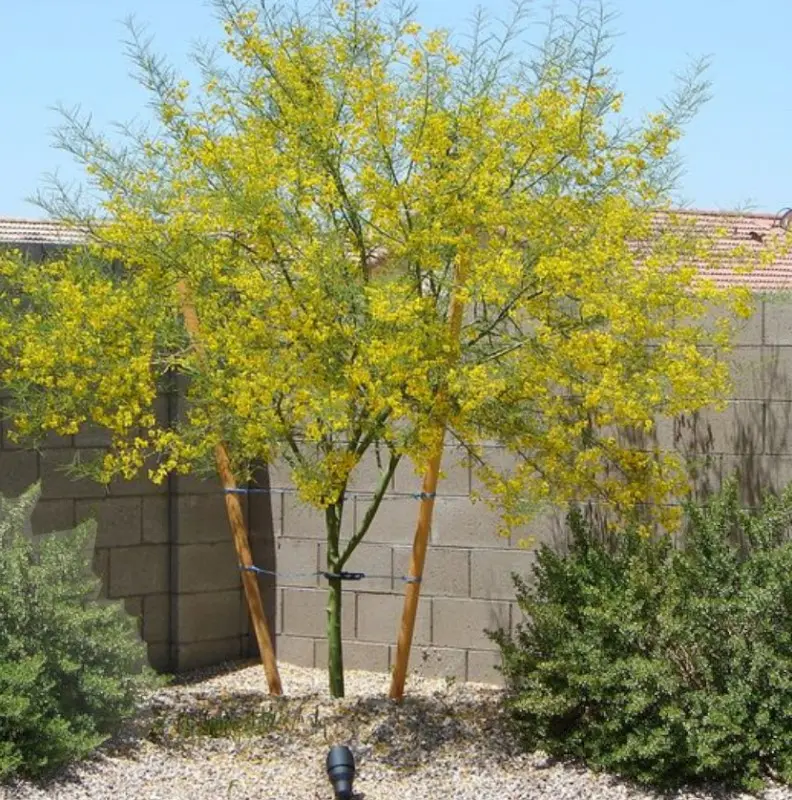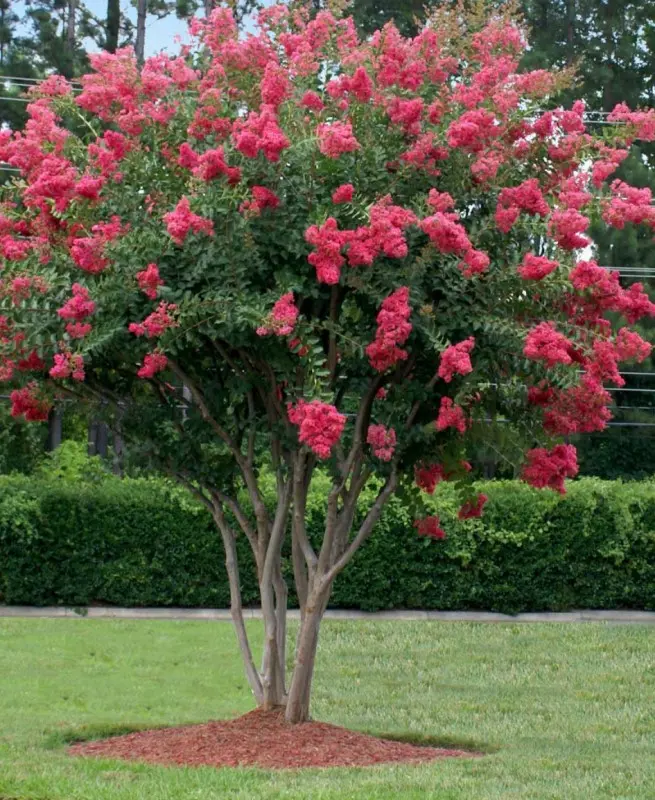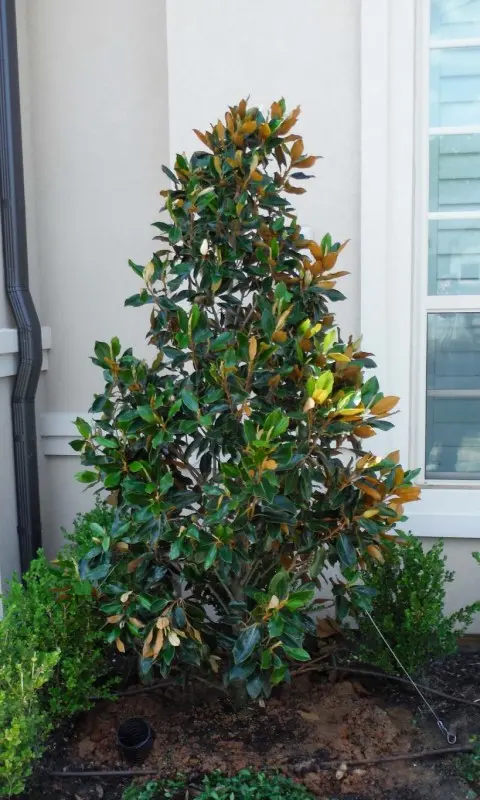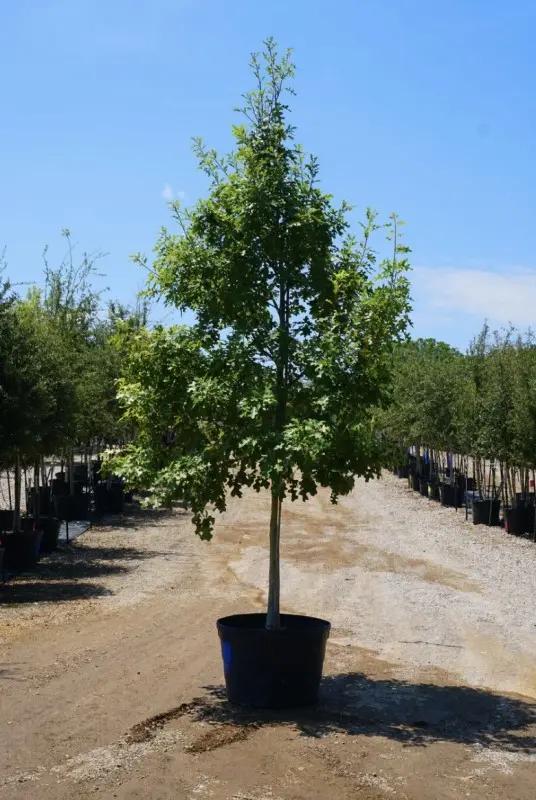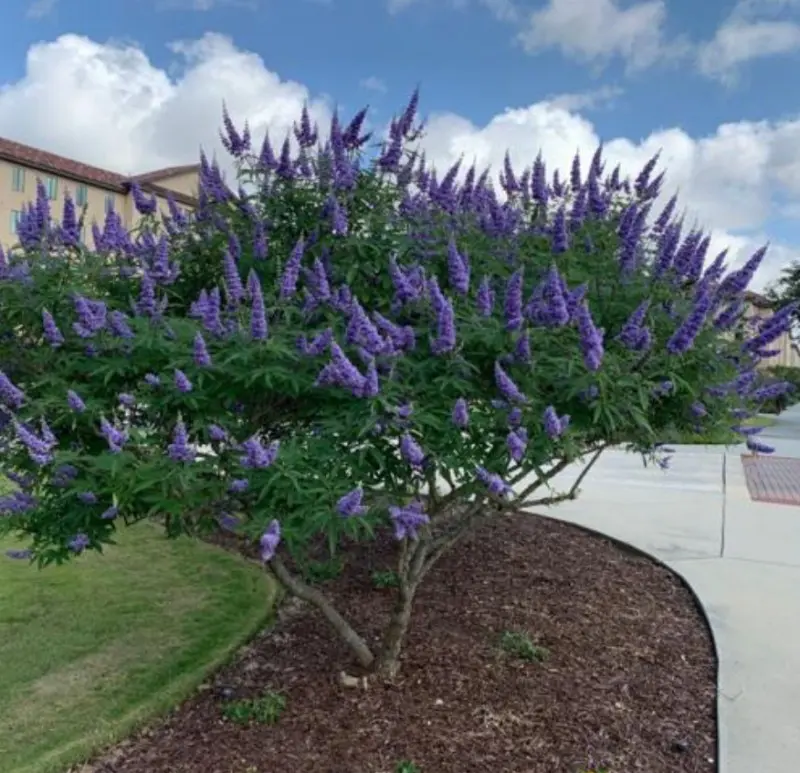Description
Palo Verde (Parkinsonia spp.), often called the “green stick” tree, is a unique, deciduous tree native to the southwestern United States and northern Mexico, admired for its vibrant green bark and ability to thrive in arid desert environments. Its green bark is an adaptation that allows the tree to perform photosynthesis even when its small, delicate leaves are shed during dry periods, helping it conserve water and sustain itself in extreme climates. In spring, Palo Verde produces abundant clusters of bright yellow flowers that attract pollinators, creating a vivid seasonal display.
Several common varieties of Palo Verde are known for their distinct characteristics and adaptability. The Blue Palo Verde (Parkinsonia florida) features bluish-green bark, larger leaves, and grows up to 30 feet tall and wide. The Foothill Palo Verde (Parkinsonia microphylla) has smaller leaves, a more compact form, and reaches about 20 feet in height and width. The popular hybrid ‘Desert Museum’ Palo Verde (Parkinsonia x ‘Desert Museum’) combines the best traits of its parent species, growing rapidly to about 30 feet tall and 40 feet wide, producing larger flowers and featuring a thornless structure.
Palo Verde trees thrive in full sun, requiring at least six hours of direct sunlight daily and performing best in well-draining soils, including sandy and rocky types. While they are highly drought-tolerant once established, young trees benefit from regular watering to develop strong root systems. Palo Verde requires minimal maintenance, with pruning mainly done to remove dead or crossing branches. Ecologically, these trees support desert ecosystems by providing food and habitat for wildlife and serving as nurse plants for young cacti. Recognized as the state tree of Arizona, the Palo Verde adds beauty and resilience to desert landscapes with its striking green bark, seasonal yellow blooms, and essential role in supporting desert life.

